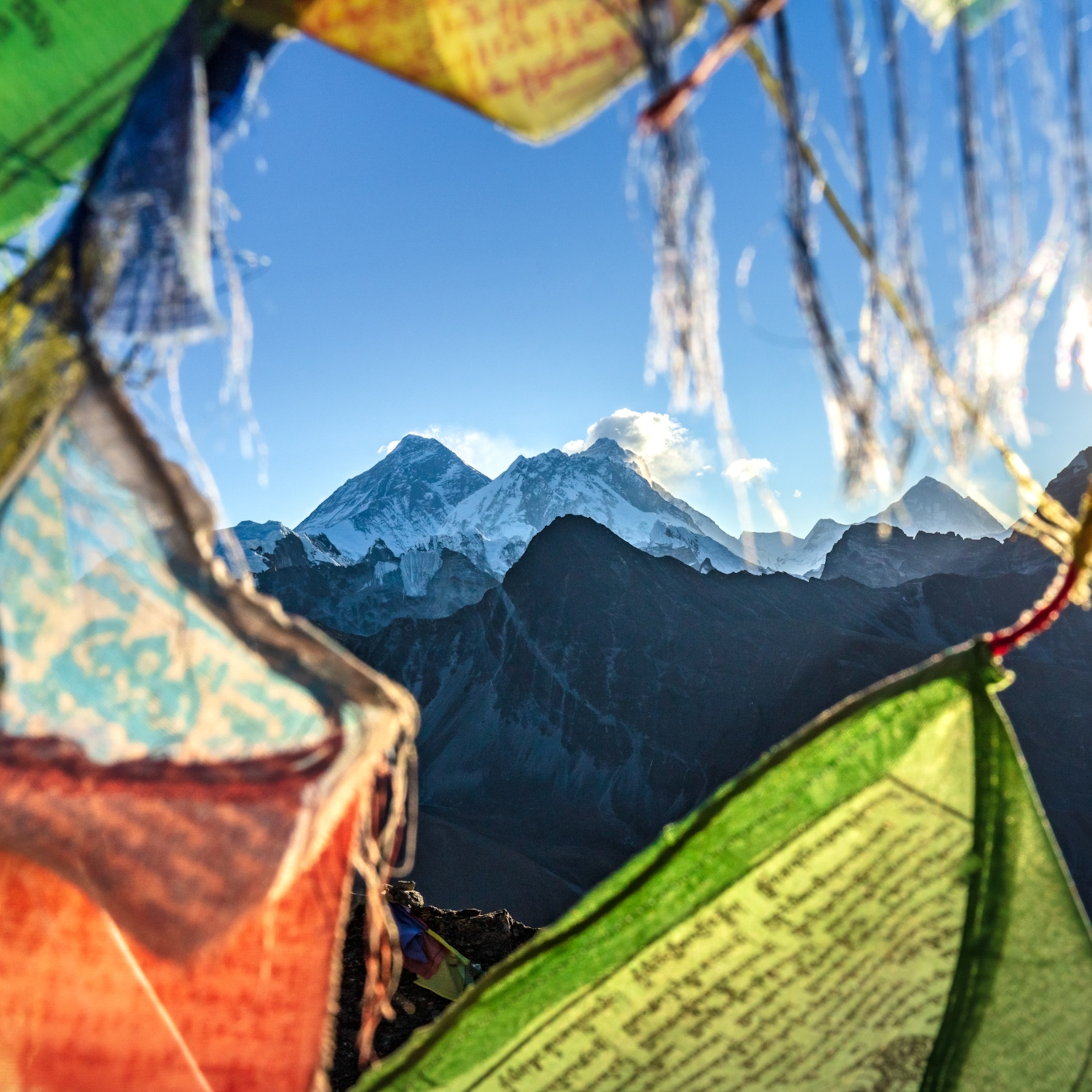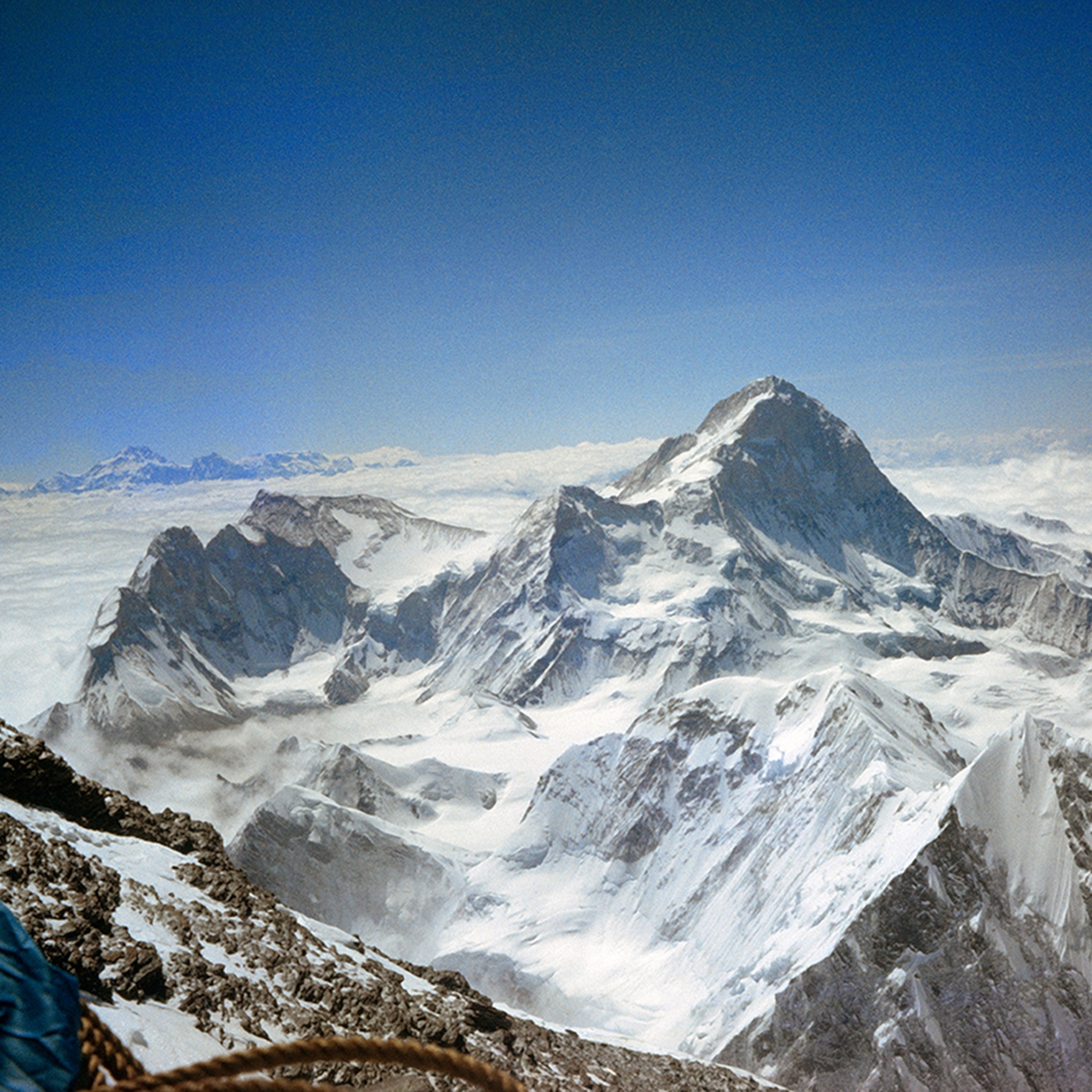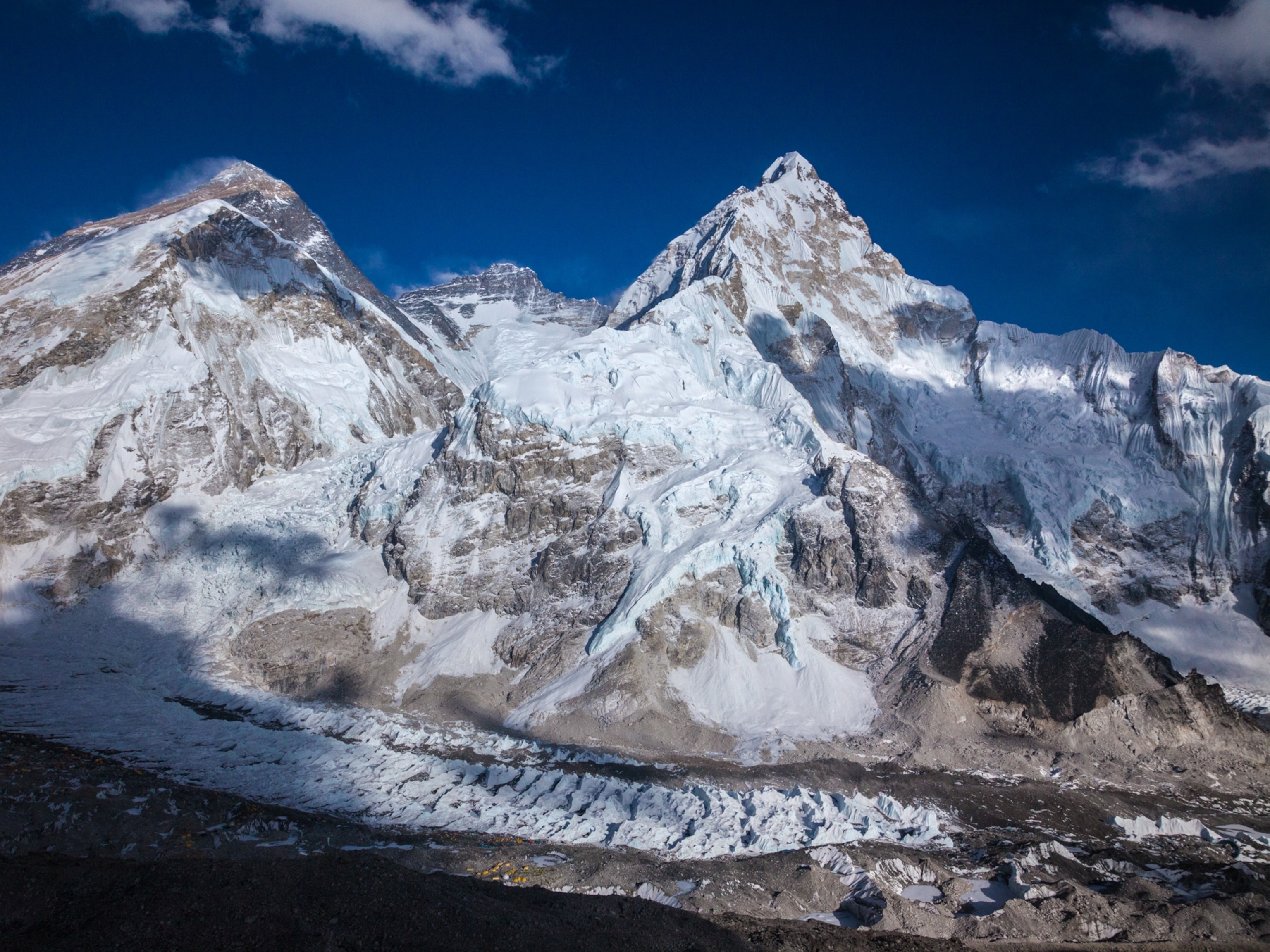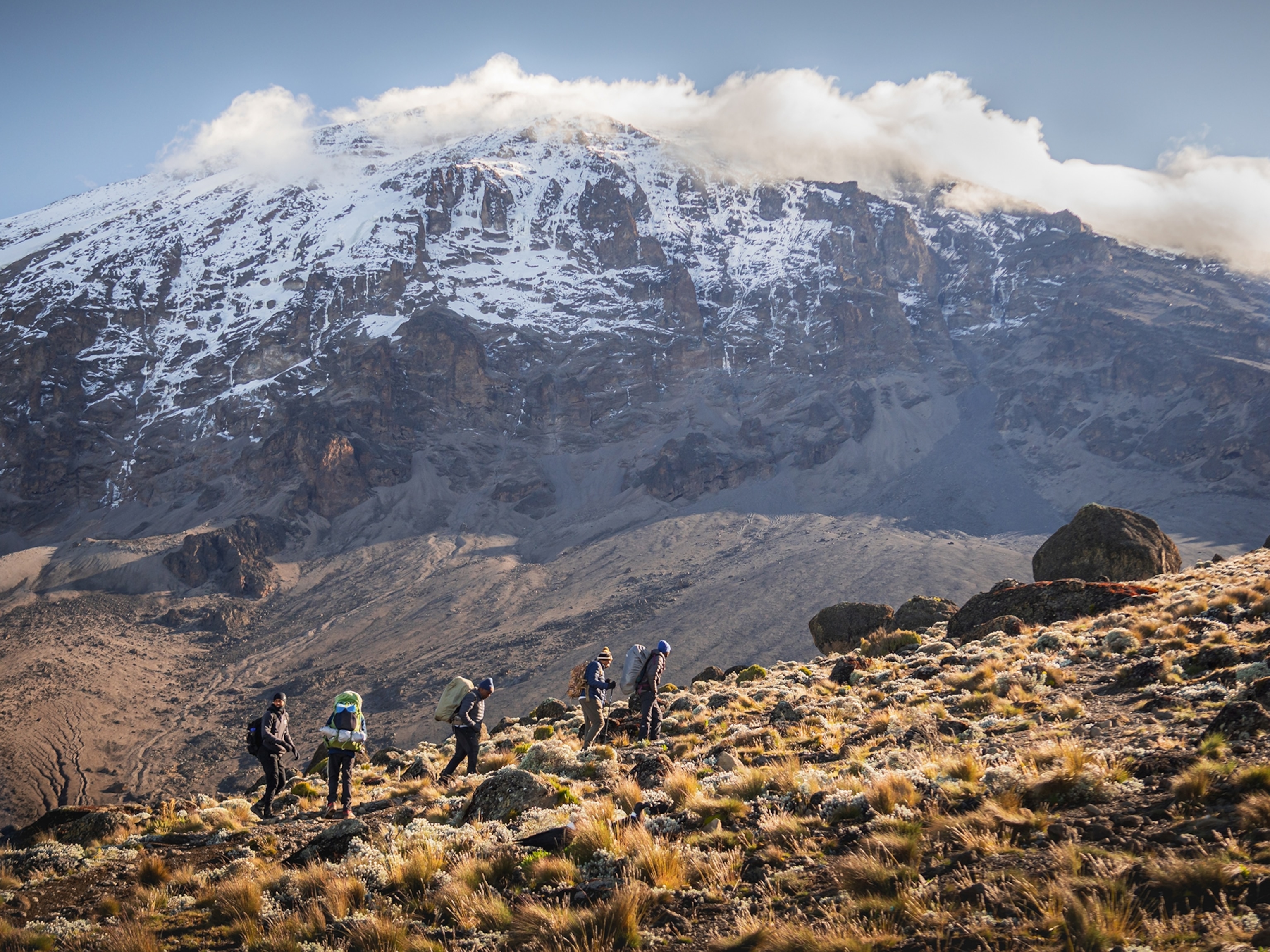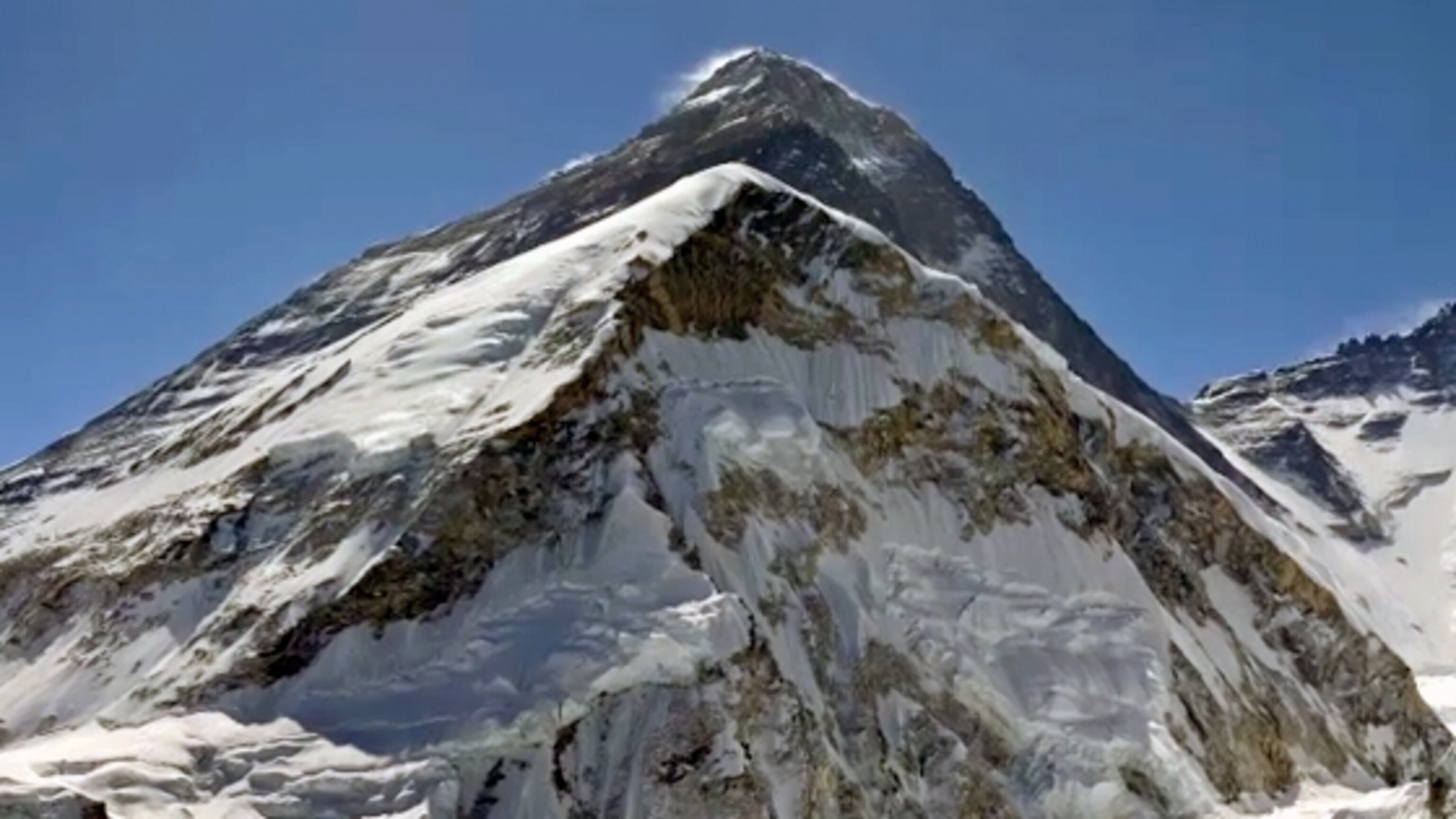
Weather Clears and Team Launches Summit Bid
Dispatch—Day 48: May 13, 2009
Everest Base Camp—17,530 feet (5,343 meters)
N 28º 00.336' E 086º 51.504'
I'm scared of Mount Everest. There, I said it. In fact, I'm scared of most mountains I climb, even ones like Rainier which I've climbed close to 90 times. But it's a fear which I embrace and welcome with each new climb.
My fear began in 1984, when I watched Winds of Everest, a film about the first American ascent of Everest's North Side (incidentally, it was led by Lou Whittaker, and his son, Peter, climbed above 25,000 feet on the expedition). The opening narration by John Denver reads:
In the eternal lives of mountains, the ambitions of men are as insignificant as the snow that swirls from their rocky ridges. The lives of man are transitory...the mountain is everlasting.
It's a notion that has never been lost on me, a constant reminder that mountains do not forgive complacency, that any peak—no matter how familiar, no matter how many times you have climbed it—can be a deadly, dangerous place. Fear, in the mountain realm, is a good thing.
I've been to Everest before. My first trip here was to the Northeast Ridge in 1999. This is my sixth expedition to Everest, my eighth to an 8,000 meter [26,000 foot] peak. I was able to sneak to the top of Everest by the Southeast Ridge in 2002, and the Northeast in 2003.
In many ways, this is familiar turf, a comfortable stomping ground. One would think, then, that gearing up for our summit bid would be simple, devoid of much thought, anticipation, or trepidation about the days to come. But that is far from the case.
We've all read the press reports that love to tout today's Everest as a “walk up,” “a highway,” and the like. Sure, the mountain today is not Hillary and Tenzing's Everest, or Whittaker and Gombu's. It's changed considerably over the years—a little physically and a lot in how it's climbed. However, the reality is that it's still 29,035 feet [8,850 meters] tall, there's no tram or escalator (yet), and to get to the top one must still put one foot in front of the other for 12,000 vertical feet [3,600 meters] above Base Camp.
As I prepare for our summit bid, that reality is never far from my mind.
I gaze up at the Icefall looming immediately out of camp, and see its hazards. It was only a week ago that it claimed a life. Gotta be ready to move fast there, as always, but maybe even a bit faster this time. From there, the Western Cwm presents little danger—aside from oppressive heat at times—but I know its couple of miles of length can take a lot out of a climber, and I'll need to arrive at Camp 2 feeling strong—lots of mountain above that.
The Lhotse Face—a couple thousand feet of steep snow and ice—is made more approachable with fixed lines, but still a place for caution. Falling rocks are one hazard, and simply missing a clip or taking a fall are other real hazards. No complacency there, I tell myself, remembering the climber who died in 2002. Climb strong, safe, and smart.
- National Geographic Expeditions
From Camp 3, it gets more serious. Approaching 8,000 meters [26,000 feet]—the famed death zone—both the mind and the body suffer, and there's still a lot of mountain to climb. While I've been fortunate to always perform well up high, I never kid myself into believing it will be easy. A myriad of things can go wrong—a stomach bug, cold, or infection can all take you out of the running. Above Camp 3, we're in down suits, breathing oxygen; communication becomes more difficult, peripheral vision obscured. And ahead lie the Yellow Band and Geneva Spur... neither overly technical or challenging, but made at least interesting given their location. No mistakes here either. It's a long way down!
Finally, the South Col, Camp 4, 26,000 feet [8,000 meters]. Not even a glimmer of relaxation here. We'll pull into the Col in early afternoon, brew up, lie down, and in a handful of hours begin walking again, in the dark, up the Triangle Face and toward the summit. It's a long day from the Col... perhaps 4 hours to the Balcony at 27,500 feet [8,380 meters]. Another 2 hours or so from there to the South Summit, 28,750 feet [8,760 meters]. And then it gets interesting: here's where things most often begin to unravel. From the South Summit lies the most exposed and technical terrain of summit day, if not of the entire climb. And there are bottlenecks: find yourself up there with a crowd, and you can wait for an hour or more to ascend the Hillary Step and get to the top. There's no passing lane; standing room only.
But then you finally hit the top. Celebration! Elation! Congratulations! And then the realization that the top is only halfway—there's still 12,000 feet [3,600 meters] of dangerous terrain between the top and bottom. No champagne yet, not until every team member—Nepalis and Westerners alike—are safely back at Base Camp. Never let your guard down... the mountain doesn't care about your ambitions.
Sure, I've climbed Everest before. I'll be with a strong team with ample experience. The weather looks reasonable. But, despite all that, I still have a lot of trepidation. I'm scared of Mount Everest... and I'm happy to be.
